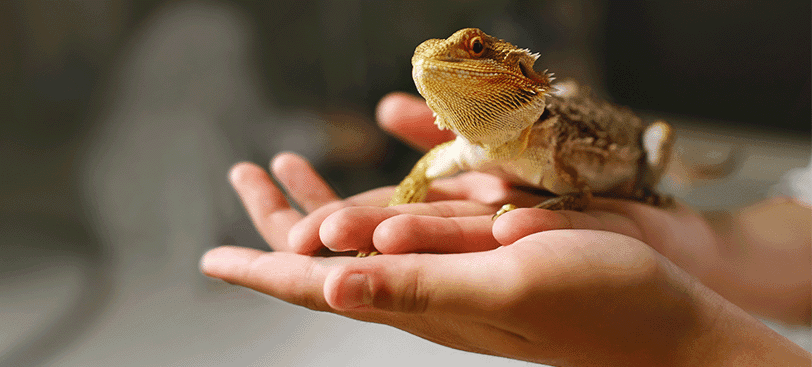
Owning a Reptile
Reptiles are increasing in popularity largely because of reduced space requirements and they are relatively inexpensive to keep (although initial purchase costs can be high).
Housing - The Terrarium
Reptile houses are called terrariums. In general they should be well ventilated, escape proof and have appropriate lighting. Terrariums can be tall and narrow to accommodate tree dwelling reptiles (e.g. like dragons and monitors) or low and wide, suitable for most lizards and ground dwelling snakes.
Get a terrarium that is suitable for the type of reptile you’ve decided to keep. Petstock have a great range available.
Outfitting Your Terrarium
Covering the floor of your terrarium is important and there is a variety of coverings to choose from. While sand and shredded bark are options and provide a great visual appearance, special reptile carpet is another alternative. It is also important to provide your reptile with the security of hides and shelters and opportunities to camouflage themselves. Standard décor items may include rocks, basking limbs, plants and logs.
Environmental conditions of your terrarium
Heating
It is essential to provide a thermal gradient in your terrarium, i.e. warmer at one end and cooler at the other. Several ways of heating your enclosure include: basking bulbs, ceramic heaters, heat mats, central heating for the building or space heaters in the room where the reptile’s enclosure is kept.
A thermometer should be placed in the terrarium (preferably two, one at each end) and a thermostat is also a good idea to help regulate temperatures.
Lighting
This can be provided in two ways:
- A full spectrum incandescent lamp provides both heat and light and is best used as a basking bulb hanging above the enclosure at one end.
- A full spectrum fluorescent UVA/UVB tube lamp provides a sunlight replacement for those reptiles that need it. This lamp usually does not provide enough heat without a separate heating source.
Hot rocks should not be used as they can burn your reptile. Natural, unfiltered sunlight is the best type of full spectrum lighting. The needs of each reptile vary greatly dependent on their species. Speak to a Petstock Team Member about your reptile’s specific needs.
Feeding requirements
Your reptile’s diet will vary depending on their specifics needs and you should consult specific care sheets for advice. However, each animal is primarily one of three types:
Herbivore
A plant eater. They need large amounts and a good variety of food. Commercially prepared diets are available for some reptiles; otherwise feed fresh food with vitamin and mineral supplements. Parsley, dandelion leaves, lettuce, cress and fresh fruit are a few options.
Carnivore
A meat or protein eater. These are predominantly snakes which love rats, mice and pinkies (baby mice). Lizards often eat insects and invertebrates. Crickets and mealworms are great food sources for lizards, although mealworms should be fed sparingly as they are high in fat.
Omnivores
Eat both plant and meat or protein. Along with providing quality food, it’s also a good idea to supplement your reptile’s diet with additional calcium, vitamins and minerals. It is important to find out the requirements for your particular reptile.
Ensure you provide your reptile with fresh water everyday.